Last week, Bob Bear and I set out on a four-day road trip into scenic northern Alberta, north and west of Edmonton. Our prime destination is an area known as Peace Country, an aspen parkland region centring on the Peace River. It extends from northwestern Alberta to the Rocky Mountains in northeastern British Columbia.
Our first day was largely spent traveling from Canmore to the town of Whitecourt, 2 hours west of Edmonton.
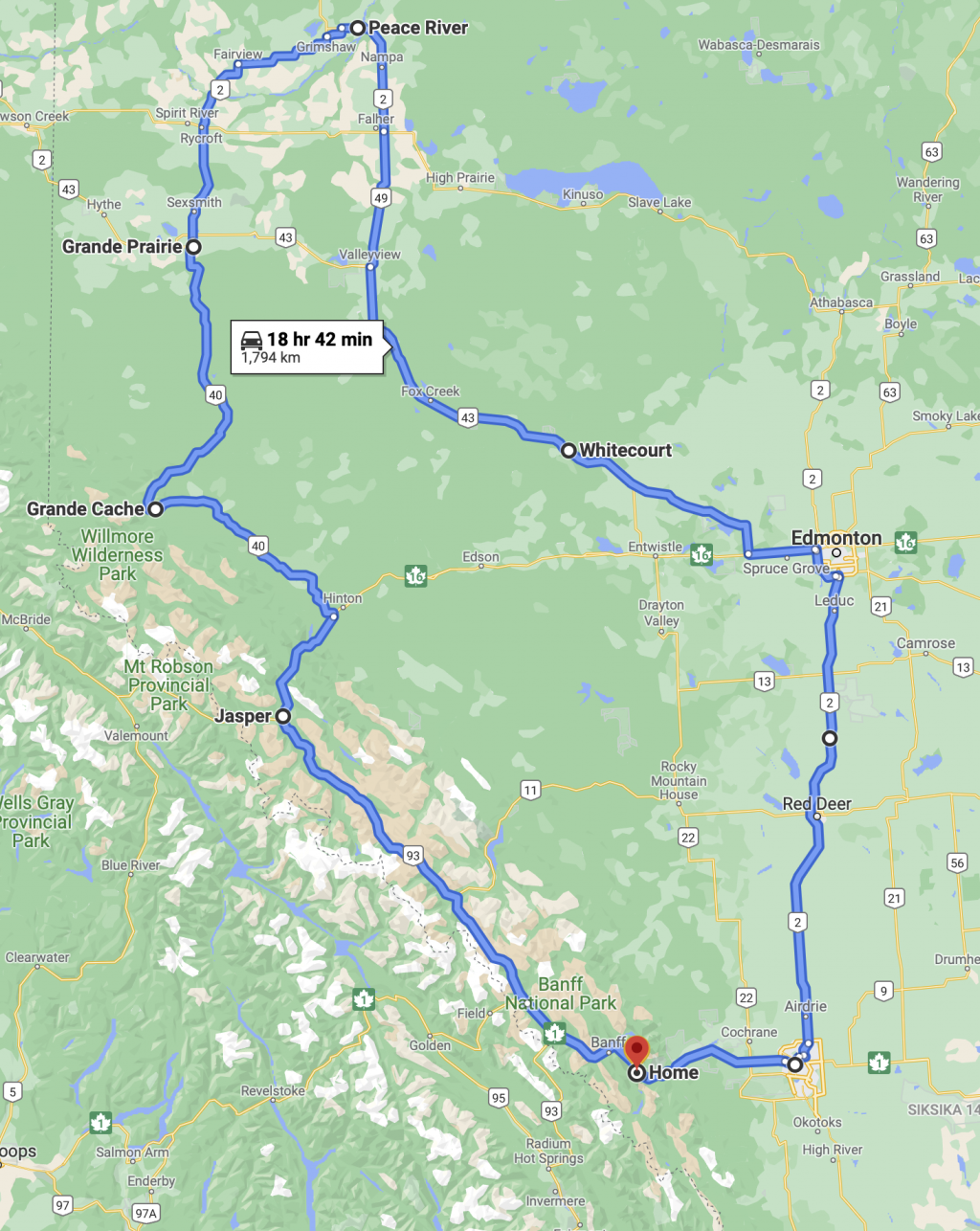
En route to Whitecourt, we made a few stops along the way to take photographs, including some pictures of this railroad trestle near the town of Mayerthorpe. Also known as Rochfort Bridge, the trestle is named for Cooper (Cowper) Rochfort, who homesteaded on the nearby Paddle River. It’s an impressive structure, the longest wood railroad trestle in North America. It is 2,414ft (736m) long, and 110ft (33.5m) tall. It was built in 1914 over the Paddle River and is still in use by Canadian National Railway (CN). It was burned to the ground by an arsonist in 2016. CN crews worked 20 days straight to replace it.
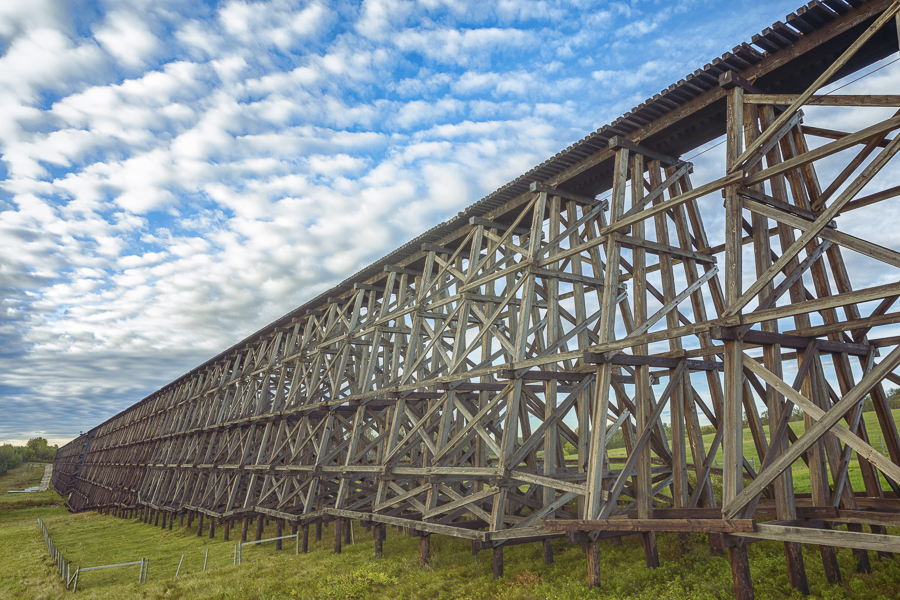
Here is an interesting close-up of the wooden structure.
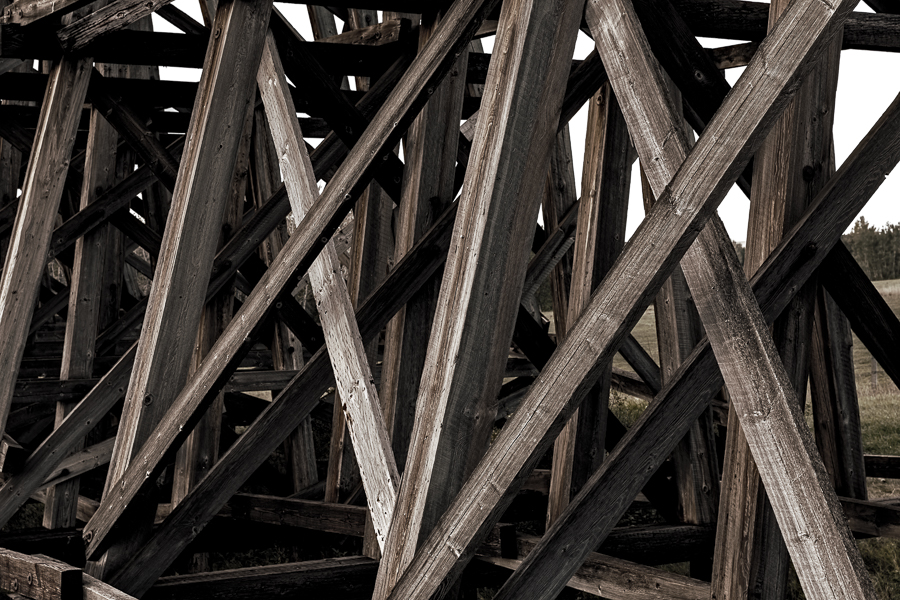
The following morning en route to Peace River, we encountered another bridge, this one a newer one, crossing the Little Smoky River. I liked this view from beneath the bridge, looking across the water. Nice scene with autumn colours beginning to emerge.
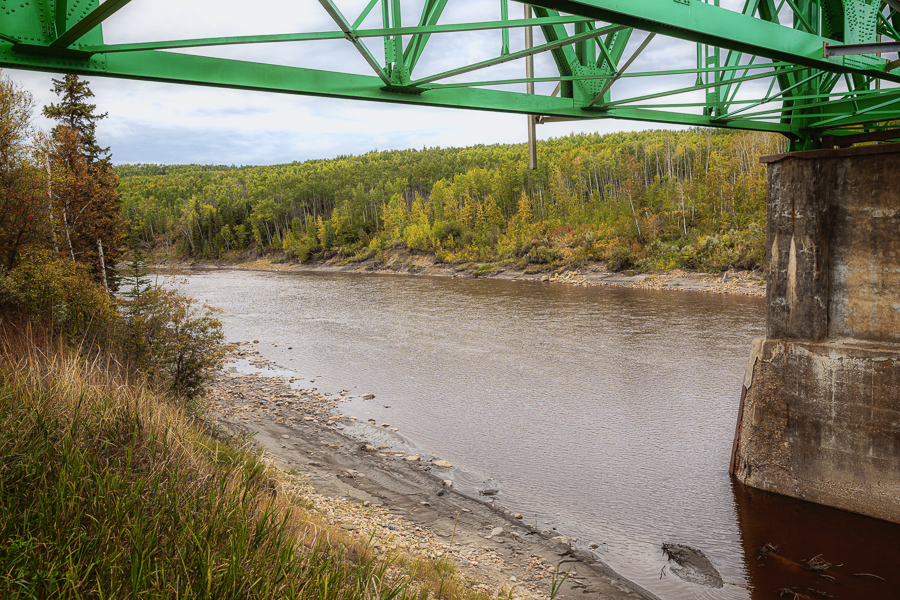
Looking in the opposite direction, I noticed some graffiti, painted on on one of the bridge foundations. Graffiti is known to be colourful. Who ever saw graffiti painted in black and white? The photograph was taken in colour but I just can’t warm up to it. In a word, it looks garish.
Digital cameras take pictures in colour. A black and white image is created by converting the colour picture in photographic software. The software reduces the saturation of all colours in the image to the point where no colour remains, only shades of black, white and gray. The underlying colours remain and they can selectively be made lighter or darker by adjusting each colour’s luminosity control. For instance, the lettering painted on the bridge pier is red. It shows up as very dark in this photo because I chose to darken the underlying red colour. There are eight colours to work with, so there is wide range of luminosity available.
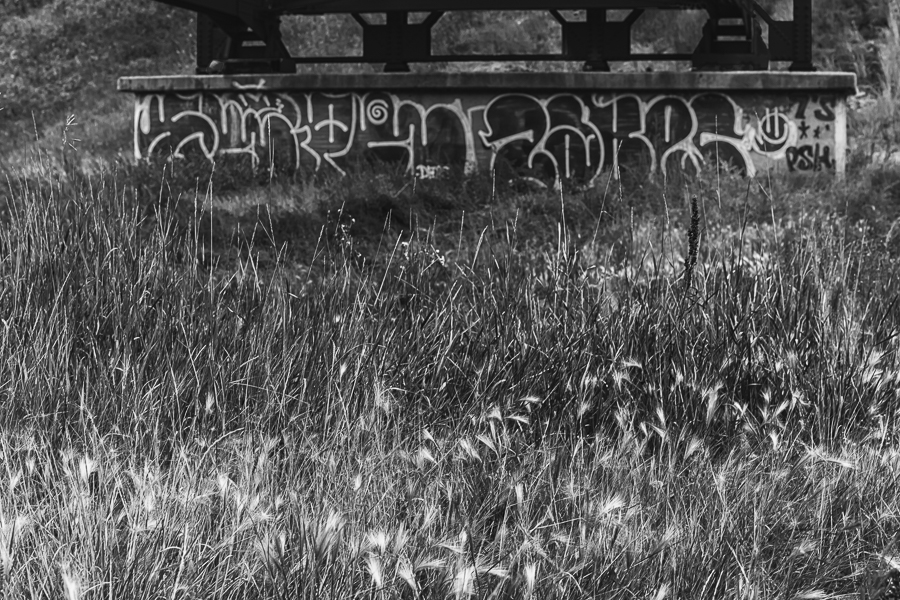
That wraps up today’s blog. I will follow up with more photos from our trip in subsequent postings. Here’s a preview photograph from my next post, Peace River and Surroundings.
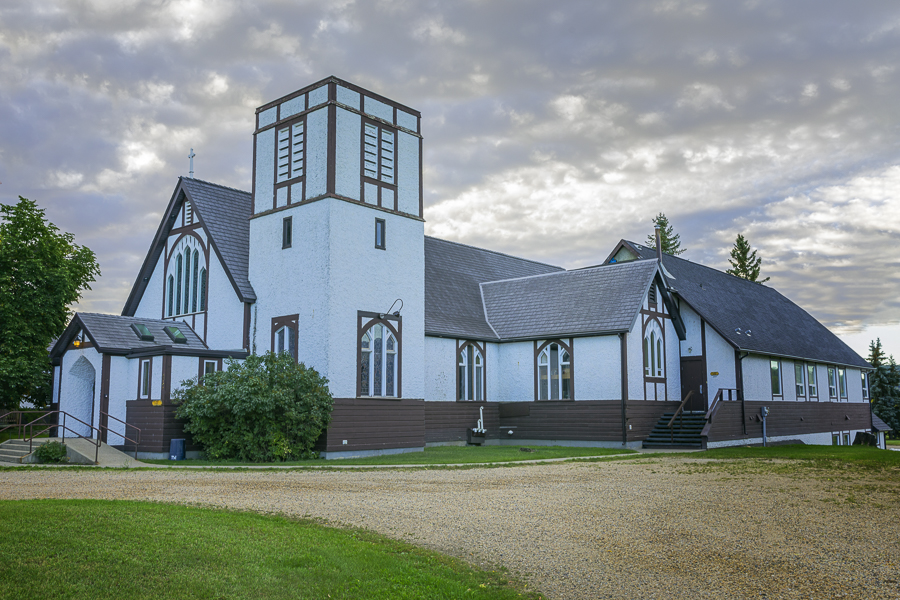

Hi Peter:
Many thanks for the great pictures. I went to Mayerthorpe a couple of years ago to get a picture of that Rochfort Bridge as I really think it’s a great structure and there’s not many of them around anymore and defintely, not that size. Keep sending the pictures as I love receiving them.
Karey
Hi to Rolande
Peter,
I love your descriptions and photographs.
Always a treat to see your next outing!
Thanks
Dick
Hi Peter, nice photos. The bridge at Rochfort is also near the site where the 3 mounties were killed by a local nutcase. I was not aware that the bridge had been significantly burned down…I had thought only a small piece had been destroyed. Angie and I have driven by the bridge probably a hundred times and we all ways argued about the pronunciation…she wanted to pronounce it like the cheese.